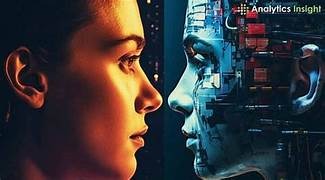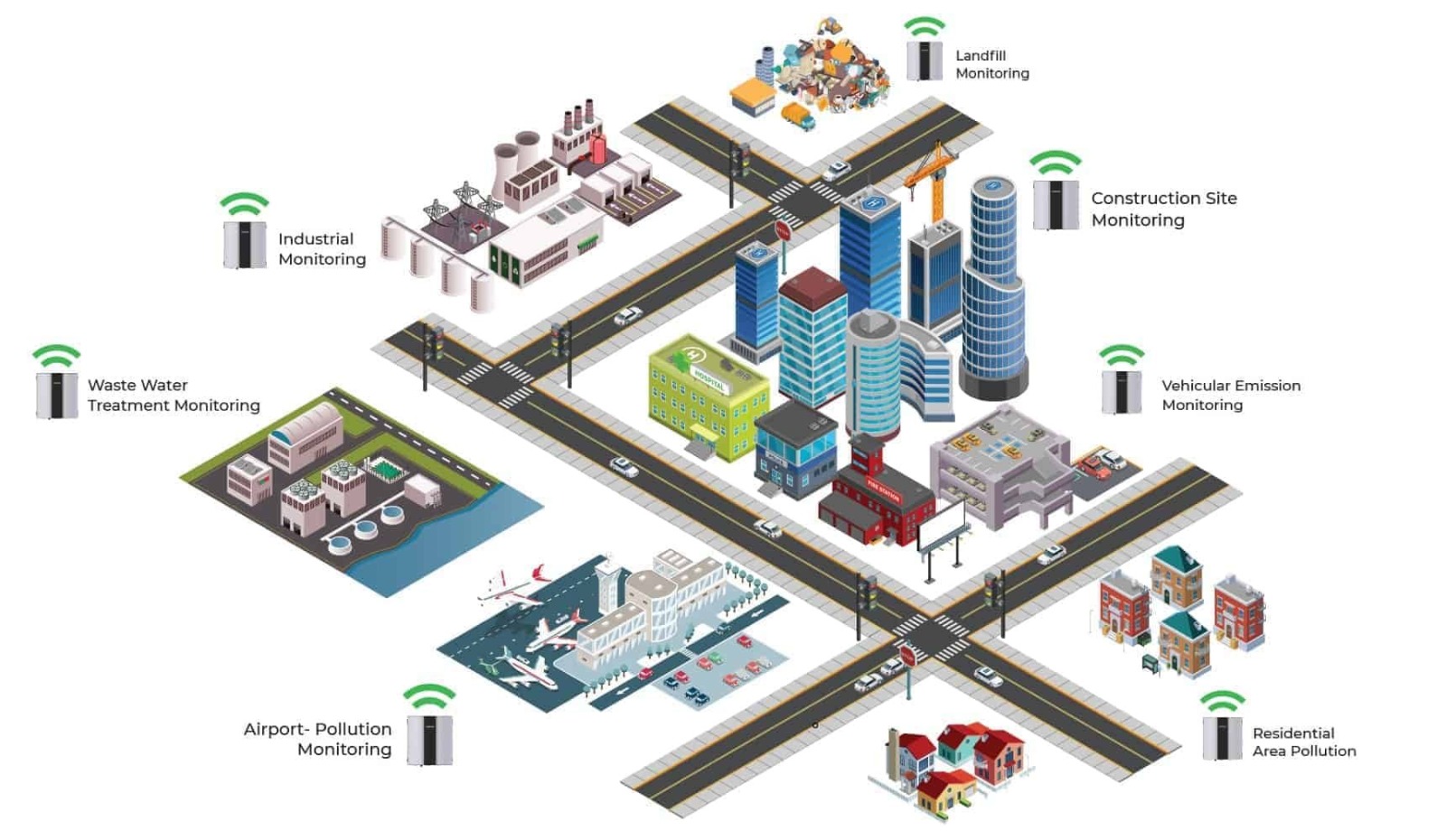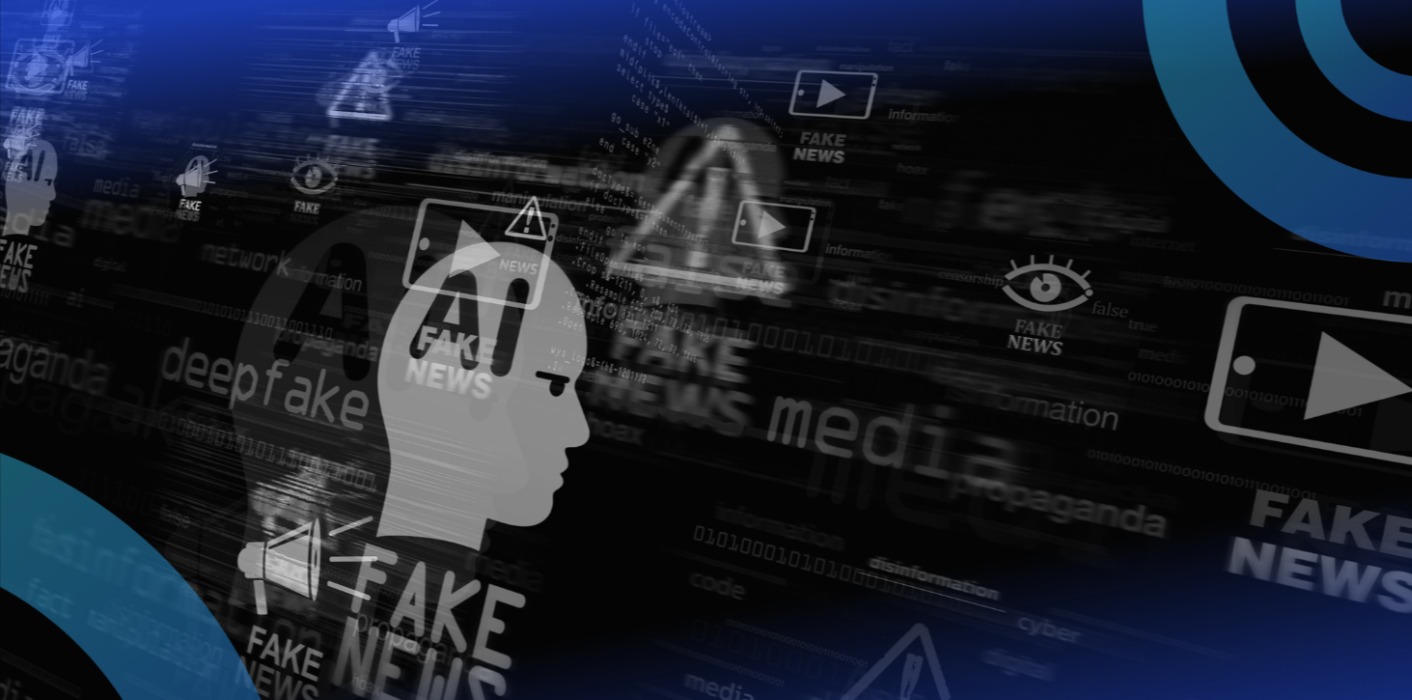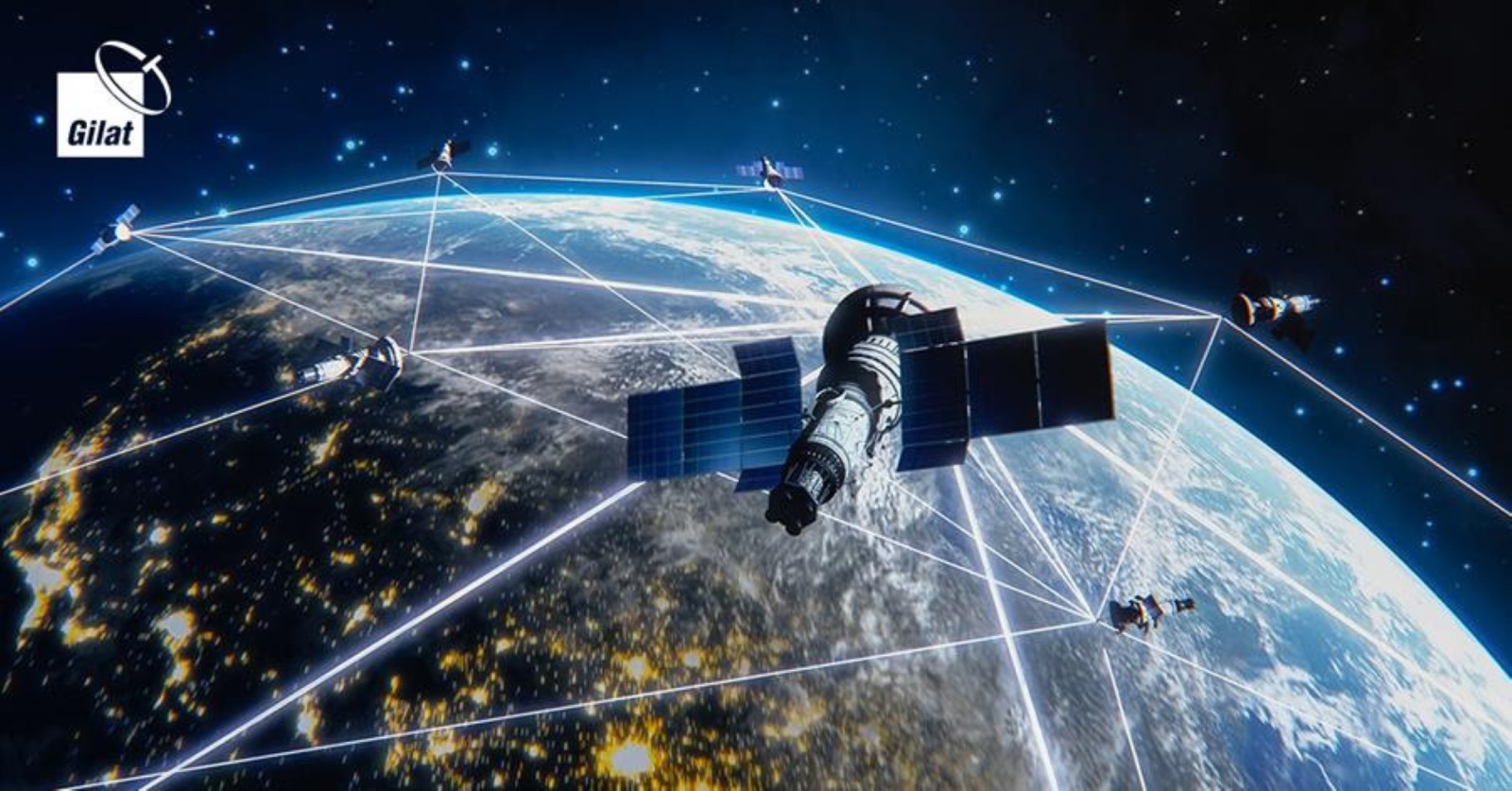
Ethical AI: Can Machines Ever Be Truly Fair?
Exploring the challenges and possibilities of creating artificial intelligence that operates without bias, respects human values, and makes fair decisions in complex, real-world contexts, this discussion examines the limitations of algorithms, the impact of societal prejudices on machine learning, and the ethical frameworks, technical solutions, and human responsibilities required to guide AI toward transparency, accountability, and justice.
✨ Raghav Jain

Introduction
Artificial Intelligence (AI) has rapidly evolved from a futuristic concept into a foundational element of modern life. From social media algorithms and facial recognition systems to healthcare diagnostics and autonomous vehicles, AI systems increasingly influence critical decisions. Yet, as their influence grows, so does the concern over their fairness, accountability, and ethics. The question at the heart of global debate is simple yet profound — can machines ever be truly fair?
At first glance, fairness might seem like a matter of programming logic — if humans can design algorithms carefully enough, surely they can ensure fairness. However, reality is far more complex. Machines do not possess consciousness, emotions, or moral judgment; they learn from data — and data itself is a reflection of our imperfect world. Hence, AI systems can inadvertently perpetuate or even amplify existing human biases.
This article explores the ethical dimensions of AI — what fairness means in this context, why achieving it is difficult, and how researchers, companies, and policymakers are striving to build more equitable systems.
Understanding Ethical AI
Ethical AI refers to the development and deployment of artificial intelligence systems that operate transparently, responsibly, and without causing harm or discrimination. The concept covers a broad range of principles, including:
- Fairness: Avoiding bias or discrimination based on race, gender, age, or any other protected characteristic.
- Accountability: Ensuring that someone — a company, developer, or institution — is responsible for AI’s actions and outcomes.
- Transparency: Making AI’s decision-making process understandable and explainable to humans.
- Privacy: Protecting user data from misuse or exposure.
- Autonomy: Respecting human freedom and decision-making in interactions with AI systems.
In essence, ethical AI aims to create technologies that are beneficial, trustworthy, and aligned with human values.
However, fairness in AI is not as straightforward as it sounds. What one group considers fair might not be seen the same way by another. For example, should a hiring algorithm prioritize the most qualified candidate purely on data-driven metrics, or should it also consider diversity and representation goals? Fairness, therefore, becomes both a technical and philosophical challenge.
The Bias Problem: Why AI Is Not Naturally Fair
AI systems learn by analyzing massive datasets — text, images, speech, and behavioral data. These datasets often contain historical patterns that reflect societal inequalities. When a machine learns from biased data, it reproduces those biases in its predictions and decisions.
1. Bias in Data Collection
AI models are only as good as the data they’re trained on. If the data is incomplete or unrepresentative, the outcomes will be skewed.
For example:
- A facial recognition system trained mostly on lighter-skinned faces tends to misidentify darker-skinned individuals.
- A credit-scoring AI might deny loans disproportionately to certain ethnic groups if past financial data reflects historical discrimination.
2. Bias in Algorithm Design
Even with diverse data, the design of the algorithm itself can introduce bias. Developers make countless subjective choices — selecting features, optimizing certain metrics, or defining success criteria. Each of these decisions can tilt outcomes toward or away from fairness.
3. Bias in Real-World Deployment
Finally, how AI is used can create unintended biases. A hiring tool that favors certain universities might disadvantage candidates from less prestigious backgrounds, not because they are less capable, but because of socioeconomic disparities.
Thus, while AI may seem impartial, it is often a mirror of human prejudice, amplified by mathematical precision.
Types of Fairness in AI
To tackle bias, researchers have proposed different definitions of “fairness.” However, these definitions sometimes conflict with each other, making fairness a balancing act. The three most common are:
- Individual Fairness:
- Similar individuals should be treated similarly by the AI system.
- Example: Two job applicants with nearly identical qualifications should receive similar scores.
- Group Fairness:
- Different demographic groups should receive comparable outcomes.
- Example: An AI should not favor men over women in hiring.
- Counterfactual Fairness:
- A decision should remain the same even if an individual’s sensitive attribute (e.g., gender or race) were changed.
Achieving all three types simultaneously is mathematically impossible in most cases. Hence, developers must choose which notion of fairness best suits their ethical and legal obligations.
Real-World Examples of Unethical AI
Numerous cases have shown how AI can unintentionally harm certain groups or reinforce discrimination:
- COMPAS Algorithm (Criminal Justice):
- In the U.S., the COMPAS system, used to predict criminal recidivism, was found to be biased against African American defendants, labeling them as higher risk than white defendants with similar records.
- Amazon’s Hiring Algorithm:
- Amazon developed an AI to screen job applicants, but it was discovered that the system penalized resumes containing the word “women’s” (as in “women’s chess club”) because historical hiring data reflected gender bias in tech roles.
- Facial Recognition Misidentification:
- Studies by MIT Media Lab and others found that facial recognition systems from major tech companies had error rates of up to 34% for dark-skinned women, compared to less than 1% for light-skinned men.
These examples underline that bias is not an isolated glitch — it’s systemic. Without intentional correction, AI will perpetuate inequality under the guise of objectivity.
Can AI Be Made Ethical?
While eliminating bias entirely might be impossible, several strategies can minimize unfairness and promote ethical AI.
1. Diverse and Representative Data
Creating datasets that include varied demographic and contextual information helps reduce bias. Efforts such as “Datasheets for Datasets” and “Model Cards” are designed to document dataset sources, collection methods, and potential limitations.
2. Algorithmic Audits and Transparency
Organizations can conduct algorithmic audits — systematic checks to identify discriminatory outcomes. Transparency reports also allow independent reviewers to assess AI behavior.
3. Human-in-the-Loop Systems
Incorporating human oversight ensures that AI-driven decisions can be reviewed, corrected, or overridden by ethical reasoning. For example, in healthcare, AI may suggest diagnoses, but doctors make the final call.
4. Ethical Frameworks and Regulations
Governments and global bodies are developing frameworks to regulate AI ethics. Examples include:
- The EU AI Act, which classifies AI systems by risk and imposes strict rules on high-risk applications.
- The OECD AI Principles, promoting transparency, accountability, and human-centric design.
- The UNESCO Recommendation on the Ethics of AI (2021), a global framework emphasizing fairness, non-discrimination, and sustainability.
5. Explainable AI (XAI)
Explainable AI seeks to make algorithms understandable. If humans can comprehend how an AI reached a decision, it becomes easier to detect bias or unfair reasoning.
The Philosophical Dilemma: What Is Fairness, Really?
Even with technical solutions, the question remains — who decides what is fair?
Fairness is not universal; it depends on cultural, moral, and situational contexts. A justice system might value equality of treatment, while an educational system might value equality of opportunity.
Philosophers distinguish between procedural fairness (fair processes) and distributive fairness (fair outcomes). AI complicates both — it may follow fair procedures mathematically but produce unfair outcomes socially.
Hence, ethical AI is not only a technical issue but also a moral and societal negotiation. The goal is not to make AI perfectly fair but to make it consciously accountable and corrigible.
The Future of Ethical AI
Looking ahead, the path toward ethical AI involves collaboration among technologists, ethicists, policymakers, and communities. Future systems might include:
- Value-Sensitive Design: Integrating human values during the earliest stages of AI development.
- AI Governance Boards: Ethical review committees to oversee large-scale AI projects.
- Public Participation: Allowing communities affected by AI (e.g., citizens, employees, patients) to have a voice in its design and deployment.
- Global Standards: Harmonizing regulations across countries to ensure AI fairness is a shared global priority.
Ultimately, the future of ethical AI depends not on machines becoming fairer on their own, but on humans choosing to make them so.
Artificial Intelligence, which has evolved from a mere scientific curiosity into a transformative force shaping nearly every aspect of modern society, presents one of the most profound ethical dilemmas of the 21st century, and at the core of this dilemma lies the question of fairness, a concept that humans themselves have struggled to define and enforce across centuries, and now we are placing this responsibility, in some form, on machines, systems that operate without consciousness, without moral intuition, and without the lived experiences that shape human understanding of justice; the challenge, therefore, is both technical and philosophical, because while AI can analyze vast amounts of data, identify patterns, and optimize outcomes far beyond human capabilities, it inherently lacks the ability to comprehend the nuanced social, cultural, and moral contexts that underpin our judgments of fairness, and this absence becomes critically important when AI systems are deployed in domains that have profound human consequences, such as hiring, criminal justice, lending, healthcare, and education, where decisions are not merely statistical but affect livelihoods, freedom, and even lives, and yet, despite this enormous responsibility, AI systems are fundamentally reliant on historical data, which is a reflection of human history, with all its inequalities, biases, and structural injustices; consequently, when a machine learns from data, it can replicate and even amplify the prejudices embedded within it, whether intentionally or inadvertently, meaning that AI does not generate bias on its own but acts as a mirror, reflecting societal inequities, sometimes with mathematical precision that magnifies their impact, such as in the infamous case of the COMPAS algorithm in the United States, which disproportionately labeled African American defendants as higher risk compared to their white counterparts with similar criminal histories, or Amazon’s AI recruiting tool that downgraded resumes with terms associated with women because it was trained on decades of male-dominated tech industry hiring patterns, or facial recognition systems that misidentify darker-skinned individuals far more often than lighter-skinned ones, highlighting the practical consequences of unexamined assumptions encoded in algorithms, and these examples demonstrate that ethical AI cannot be reduced to a question of coding or mathematics alone but must be approached as a multidimensional problem involving technical safeguards, human oversight, legal regulation, and societal values, because even if an AI system is designed to be neutral and objective in theory, in practice, neutrality is not fairness, and fairness itself is not a universal concept, as it can vary depending on the context, the cultural lens, and the moral framework applied; for instance, should fairness in hiring mean treating every applicant exactly the same, regardless of background, which emphasizes procedural fairness, or should it prioritize equitable outcomes, ensuring historically marginalized groups have enhanced opportunities, which reflects distributive fairness, and the answer is often both situationally dependent and subject to debate, illustrating the inescapable reality that AI cannot autonomously adjudicate fairness in human terms, and therefore, efforts to create ethical AI focus on mitigating harm rather than achieving absolute justice, such as implementing human-in-the-loop systems that allow people to review or override algorithmic recommendations, diversifying training datasets to include varied demographic, geographic, and experiential perspectives, developing algorithmic audits and transparency protocols to identify discriminatory outcomes, creating explainable AI models to make decision processes understandable, and enacting policies, regulations, and ethical frameworks such as the European Union AI Act, UNESCO’s AI ethics guidelines, and OECD AI principles to establish boundaries and accountability, all of which underscore that AI ethics is inherently a collaborative human responsibility and cannot be outsourced to machines; moreover, ethical AI development is complicated by the fact that technical measures to improve fairness often conflict with each other or with other optimization goals, forcing developers and policymakers to make difficult trade-offs, such as balancing accuracy with equity, or efficiency with transparency, and these trade-offs highlight the philosophical dimension of AI ethics, because the system’s outputs may be technically correct yet socially undesirable, and this discrepancy is exacerbated by the dynamic, complex, and often unpredictable nature of human societies, meaning that what is considered fair today may not be acceptable tomorrow, and therefore, any AI system must be designed to be corrigible, adaptable, and auditable over time, with mechanisms for accountability and redress; furthermore, AI fairness intersects with broader societal issues such as digital literacy, access to technology, socioeconomic disparities, and systemic discrimination, implying that creating ethical AI cannot be separated from addressing these underlying human problems, and in fact, the ultimate goal of ethical AI is less about achieving perfect neutrality and more about ensuring that AI serves human values rather than undermining them, fostering inclusivity, protecting vulnerable populations, and creating decision-making systems that are transparent, explainable, and accountable, while also empowering communities to participate in shaping the norms and standards that govern these technologies, and as we look to the future, concepts such as value-sensitive design, public participation in AI governance, AI ethics boards, continuous monitoring of algorithms, and global regulatory harmonization will become increasingly critical, because only through conscious human intervention, diverse perspectives, and robust institutional frameworks can we hope to guide AI toward outcomes that, while perhaps never perfectly fair, are consistently aligned with principles of justice, equity, and the common good, and in this sense, the question of whether machines can ever be truly fair ultimately returns to us: the fairness of AI is a reflection of human fairness, diligence, and ethical commitment, and until we as a society decide to encode these principles intentionally, rigorously, and transparently, no machine, however sophisticated, will ever achieve what we might call genuine fairness.
Artificial Intelligence, which has become an integral part of modern society, influencing decisions in healthcare, finance, education, criminal justice, and even everyday life, raises one of the most pressing ethical questions of our time: can machines ever be truly fair, and what does fairness even mean in the context of algorithms that lack consciousness, moral reasoning, and an understanding of human values, especially when these systems are trained on data that inherently reflects the inequalities, prejudices, and structural biases of human society, making the very foundation of AI potentially flawed in terms of ethical considerations; the problem begins with data itself, because AI systems learn from historical datasets that are incomplete, unrepresentative, or biased, and when these models are used in high-stakes decision-making, the results can perpetuate or even amplify discrimination, as demonstrated in numerous real-world cases, such as the COMPAS algorithm used in criminal justice, which disproportionately labeled African American defendants as high risk compared to white defendants with similar criminal histories, or Amazon’s AI recruiting tool, which penalized resumes that included words associated with women due to historical hiring patterns in the tech industry, or facial recognition systems that misidentify darker-skinned individuals far more frequently than lighter-skinned individuals, underscoring the fact that algorithms, no matter how sophisticated, can only reproduce the patterns present in the data they are trained on, and therefore, AI is not inherently neutral, and attempts to create “objective” systems without addressing underlying biases are fundamentally flawed, highlighting the ethical responsibility of designers, engineers, policymakers, and society as a whole to actively mitigate these biases; moreover, fairness in AI is not a singular concept but a multifaceted one, encompassing individual fairness, where similar individuals should be treated similarly; group fairness, which ensures comparable outcomes across demographic groups; and counterfactual fairness, in which decisions would remain the same if sensitive attributes such as race, gender, or socioeconomic status were altered, and achieving all these simultaneously is mathematically challenging, requiring trade-offs that must be carefully evaluated based on the context and societal values at stake, because what one culture or society considers fair may be perceived differently in another, making the design of ethical AI both a technical challenge and a philosophical dilemma, as it involves aligning machine decision-making with human moral frameworks, which are inherently diverse and sometimes conflicting; to address these challenges, researchers have proposed multiple approaches, including diversifying and curating training datasets to be more representative, incorporating human-in-the-loop systems to allow for oversight and intervention, conducting algorithmic audits to detect discriminatory outcomes, developing explainable AI that allows humans to understand and evaluate decisions, and establishing ethical and regulatory frameworks such as the EU AI Act, OECD AI Principles, and UNESCO’s AI Ethics Recommendations, all of which aim to ensure that AI systems operate transparently, responsibly, and in alignment with societal norms; however, even with these interventions, achieving perfect fairness remains elusive because algorithms operate within complex social systems that are dynamic, multifaceted, and often unpredictable, meaning that an AI system deemed fair in one context may produce biased outcomes in another, highlighting the necessity for ongoing monitoring, adaptation, and accountability, and reinforcing the idea that ethical AI is not simply a technical problem to be solved, but a continuous societal endeavor that requires collaboration among technologists, ethicists, legal experts, and the communities affected by these systems; furthermore, fairness is deeply intertwined with broader questions of justice, equity, and human rights, because AI is increasingly used in areas with profound social impact, such as determining creditworthiness, evaluating job applicants, predicting recidivism, and even guiding medical treatments, and when these systems fail to account for bias, they can perpetuate structural inequalities, creating cycles of disadvantage for marginalized groups, which is why efforts toward ethical AI must also address systemic social issues rather than focusing solely on algorithmic fixes; in addition, explainable AI and transparency are crucial because stakeholders need to understand not only the outcomes of AI decisions but also the processes and criteria that lead to those outcomes, and without this understanding, it becomes impossible to hold systems accountable or to correct discriminatory behavior, making transparency and interpretability central pillars of ethical AI design; beyond technical and regulatory measures, ethical AI also demands philosophical reflection on what fairness means, because fairness can be conceptualized as procedural fairness, focusing on equitable processes, or distributive fairness, emphasizing equitable outcomes, and these dimensions may conflict in practice, forcing difficult ethical decisions about priorities and trade-offs, and these decisions ultimately reflect the values of those who design, deploy, and regulate AI systems, highlighting the inherently human responsibility embedded in the creation of artificial intelligence; looking forward, the development of value-sensitive design, public participation in AI governance, AI ethics review boards, global regulatory harmonization, and mechanisms for continuous monitoring and redress will be essential to guide AI toward outcomes that are ethically aligned, socially just, and equitable, recognizing that no machine can independently determine what is morally right, and that fairness in AI is a reflection of human fairness, diligence, and ethical commitment, making the endeavor of ethical AI a mirror for society itself, demonstrating both our aspirations and our flaws, and reinforcing the fundamental truth that while machines can process information impartially and with remarkable efficiency, true fairness requires consciousness, moral reasoning, and empathy—qualities that remain uniquely human and that must guide every stage of AI development, deployment, and oversight to ensure that technology serves the common good, promotes inclusivity, prevents harm, and respects the dignity and rights of all individuals, emphasizing that the future of AI fairness depends not on the inherent abilities of machines, but on the ethical choices, regulatory structures, and societal commitments we make today to shape a world where technology complements justice rather than undermines it, because ultimately, machines cannot be truly fair on their own; they reflect the fairness of the humans who create and control them.
Conclusion
AI has become a central force shaping modern society, but it inherits human flaws from the data and decisions that build it. True fairness in AI remains an evolving goal — not an absolute state. While machines can process information impartially, they cannot understand justice, empathy, or moral responsibility.
Efforts to achieve fairness — through better data, algorithmic audits, and regulations — are essential, but ethical AI will always require human judgment, diversity in design, and ongoing oversight.
In the end, the question “Can machines ever be truly fair?” leads to a deeper truth: fairness is not a property of machines, but of the humans who create and guide them.
Q&A Section
Q1: What does “ethical AI” mean?
Ans: Ethical AI refers to the design and use of artificial intelligence systems that are transparent, accountable, and free from unfair bias, ensuring they benefit humanity without causing harm or discrimination.
Q2: Why is AI often biased?
Ans: AI learns from real-world data, which reflects human biases and inequalities. If that data is skewed, incomplete, or historically prejudiced, the AI will reproduce and sometimes amplify those biases.
Q3: Can AI ever be completely fair?
Ans: Not entirely. Fairness is subjective and context-dependent. However, with proper oversight, diverse datasets, explainable models, and ethical frameworks, AI can be made significantly more equitable.
Q4: What are some examples of biased AI systems?
Ans: Examples include the COMPAS criminal justice algorithm (biased against Black defendants), Amazon’s hiring AI (biased against women), and facial recognition tools with higher error rates for darker-skinned individuals.
Q5: How can we make AI more ethical?
Ans: By using diverse datasets, implementing algorithmic audits, ensuring human oversight, enforcing global ethical guidelines, and making AI systems explainable and transparent.
Similar Articles
Find more relatable content in similar Articles

Sensors & tech for clean air i..
Urban slums face some of the w.. Read More

Ethical AI: Can Machines Ever ..
Exploring the challenges and p.. Read More

AI in detecting and preventing..
Artificial Intelligence (AI) i.. Read More

Space tech for Earth problems:..
Leveraging the power of satell.. Read More
Explore Other Categories
Explore many different categories of articles ranging from Gadgets to Security
Smart Devices, Gear & Innovations
Discover in-depth reviews, hands-on experiences, and expert insights on the newest gadgets—from smartphones to smartwatches, headphones, wearables, and everything in between. Stay ahead with the latest in tech gear
Apps That Power Your World
Explore essential mobile and desktop applications across all platforms. From productivity boosters to creative tools, we cover updates, recommendations, and how-tos to make your digital life easier and more efficient.
Tomorrow's Technology, Today's Insights
Dive into the world of emerging technologies, AI breakthroughs, space tech, robotics, and innovations shaping the future. Stay informed on what's next in the evolution of science and technology.
Protecting You in a Digital Age
Learn how to secure your data, protect your privacy, and understand the latest in online threats. We break down complex cybersecurity topics into practical advice for everyday users and professionals alike.
© 2025 Copyrights by rTechnology. All Rights Reserved.